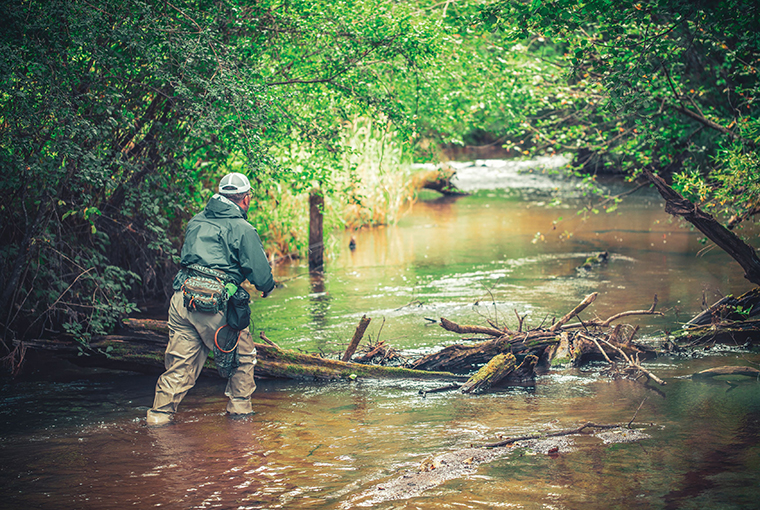
Seeing fish in a lake, river, or reservoir can be a game changer. Not only does it help you target them for effectively, but you can also see how fish react to your presentation. That said, seeing fish can be a two-edged sword. There is a reasonable chance if you see them, they see you. Fish that are highly visible are often wary as well, so this requires some thinking about your presentation. Let’s look at sight fishing and how it differs between lakes and rivers.
Sight fishing rivers
The ability to see fish in creeks, streams, and rivers is a tool that can be incredibly valuable to the angler. Spotting fish does not always come easily to everyone, however, and experience plays a role. It’s nearly always easier to see fish in ultra-clear water, or in small creeks where fish have less area to hide. Steelhead and salmon anglers who fish rivers often become good at spotting fish in a wide variety of situations.
It will take some time for your eyes to adjust to the water and for your brain to process what it is seeing. There have been many times I have looked at the tail of a pool, seen nothing but rocks, then — suddenly — made out the outline of a large trout or salmon. The ability of all species to blend into the environment they live in is incredible.
Last spring, during a steelhead trip, I was fly fishing a long, clear pool. The sun was high, and for the most part I could see bottom. Yet there was just enough ripple to break up the surface and make it a little trickier to see fish. I drifted the back of the pool and middle section with no success. At the head of the pool, there was more current, but bottom was still visible and no fish were obvious. I stared for quite some time before the momentary glint of a silver fish caught my eye.
Immediately, I roll cast my pink cactus fly and bead rig upstream of the pool and allowed it to drift down. The first drift was ignored. On the second pass, the cactus fly and bead swung over the lip of the pool and there was the white flash of a rainbow trout opening its mouth. Seconds later, a steelhead was in the air and then tearing off downstream, with a surprised angler in tow.
At times, when you are looking for fish, you may only get the glimpse of a tail moving, or a roll. Occasionally fish will boil on the surface, revealing their position. Sometimes what you think might be a stick or rock, is a visible portion of fish. When looking for fish in a river or stream, keep the sun to your face, but wear a buff to lessen reflection off skin. Wear dull clothing when possible. Try and spot fish from a downstream position and from a high vantage point.
When casting towards visible fish, remember that the water is swift and throwing a lure, fly, or spawn bag right at them will not work. The current will take it past the fish before it can ever see it. Put your cast well above the fish so that it can present as naturally as possible. An active fish will generally move on a fly or lure during the first cast or two. If a fish does not show interest, either change what you’re presenting to a smaller and more natural offering, or rest the fish for a time.
Lakes and reservoirs
Seeing and angling for fish in still water is a whole different game. The water is generally not moving, and as often as not the fish are. Both bank and boat anglers on lake or reservoirs can make use of sight fishing, assuming water clarity and conditions allow.
I’ve found some of the best sight fishing happens in sandy back bays that are not too deep. In the spring of the year, you may see pike sitting on the bottom of a bay post spawn. From a distance, pike in shallow water can look like logs. Fish that are sitting and not moving will not usually be active. That, however, does not mean they aren’t catchable.
I remember fly fishing for big spring pike one time and seeing a giant with its belly on the sand. I cast a small white streamer out and watched as the streamer pulsed by the fish. It took a little teasing, but that pike finally gave in and sucked the fly in with barely a movement. When the hook was set, the water came alive. That 46-inch fish was my largest ever on a fly rod.
It’s not just pike that can be sight fished. I’ve spotted smallmouth cruising over rock bars, walleye working shallow reed beds, splake on deep drop-offs and muskie sunning on sand bars. These fish can present in different ways. For walleye, it’s almost always the white tip of the tail that is visible first. A lot of times, fish cast a shadow on bottom as they move. Activity on the surface can also lead you to actually seeing fish.

On one lake many years ago, a friend and I saw some swirling in a back bay. We moved in with the boat to look, scanning the water, and saw the largest school of trout we’d ever witnessed. It was at least 50 brookies strong and on the move. We cast slightly in front of the throng and managed to pull a couple biters. But the vast majority kept on trucking, mostly ignoring us. That is another reality of sight fishing. Just because you see them, doesn’t mean you can catch them.
However, it sure is exciting to try.
Senior Editor Gord Ellis is a journalist, radio broadcaster, photographer, and professional angler based in Thunder Bay. Reach Gord at: [email protected], Twitter: @GordEllis
Originally published in Ontario OUT of DOORS’ 2021 Fishing Annual.


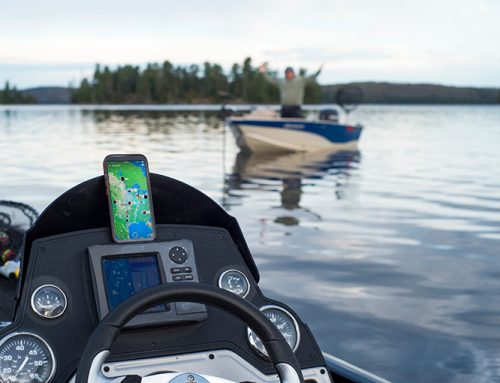
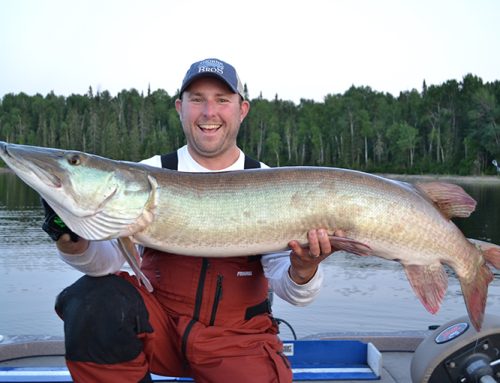
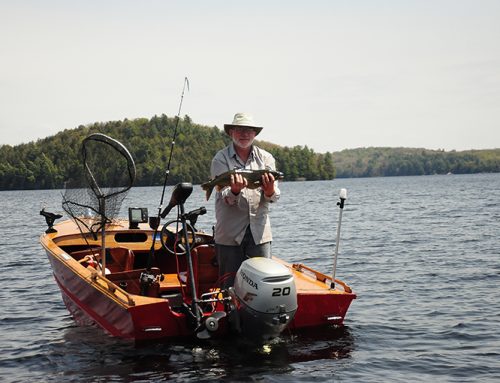
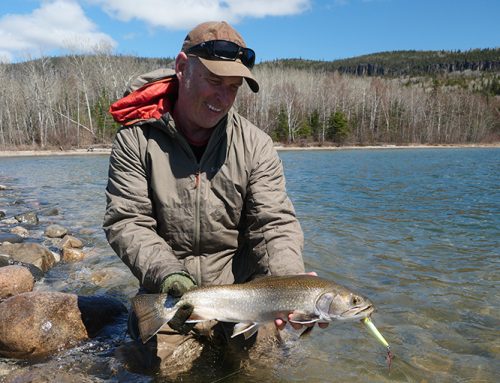
Leave A Comment